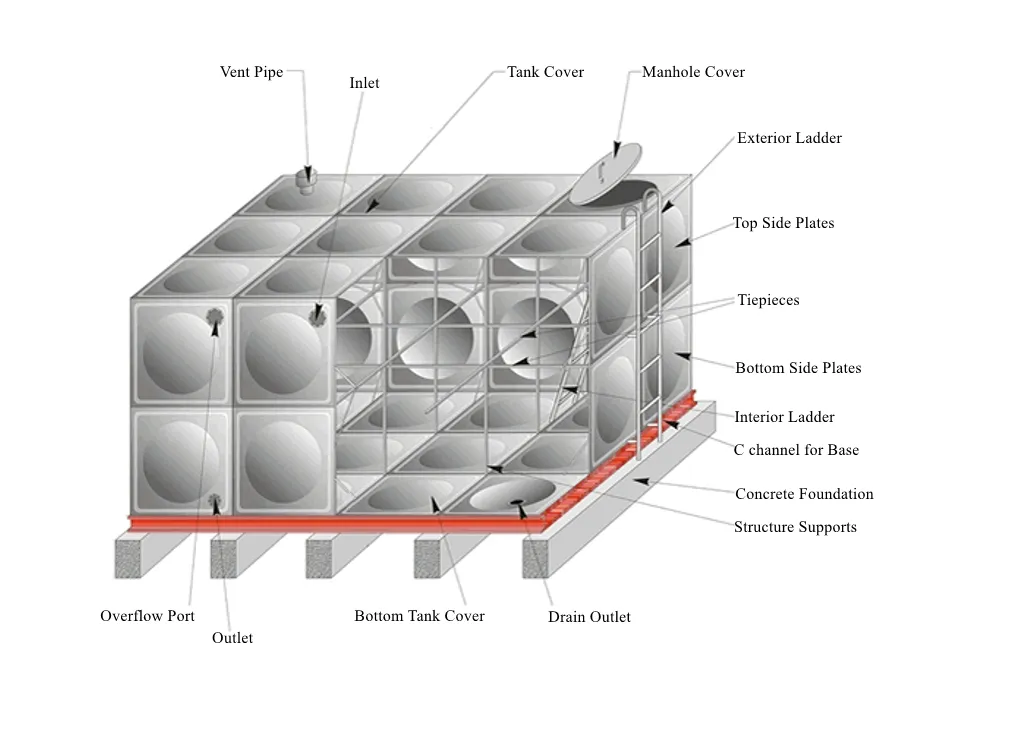loading...
- No. 9, Xingyuan South Street, Dongwaihuan Road, Zaoqiang County, Hengshui, Hebei, China
- admin@zjcomposites.com
- +86 15097380338
- Welcome to visit our website!
Exploring the Advantages of FRP Railings for Safety and Durability in Construction
Understanding FRP Railings An Innovative Solution for Modern Construction
Fiber Reinforced Polymer (FRP) railings have emerged as a groundbreaking alternative to traditional materials such as wood, metal, and concrete in various applications, ranging from residential decks to commercial settings and industrial environments. FRP railings are made from a composite material that consists of a polymer matrix reinforced with fibers like glass or carbon, providing numerous advantages over conventional railing systems.
Advantages of FRP Railings
1. Lightweight and Durable One of the standout features of FRP railings is their lightweight nature, making them easy to transport and install. Despite their lightness, they exhibit exceptional strength and resistance to various environmental factors. This durability ensures that FRP railings can withstand harsh weather conditions, UV radiation, and chemical exposure, making them suitable for both indoor and outdoor applications.
2. Corrosion Resistance Unlike metal railings that can corrode over time, FRP railings are not affected by rust or corrosion. This characteristic is particularly beneficial in coastal areas or industrial settings where exposure to saltwater or chemicals is prevalent. As a result, FRP railings require less maintenance, extending their lifecycle and reducing long-term costs.
3. Aesthetic Appeal FRP railings offer a variety of design options that can enhance the aesthetic of any space. Available in multiple colors, finishes, and styles, these railings can be customized to match the architectural design of a building. Additionally, the ability to mold the material into different shapes means that creative and intricate designs are easily achievable, making FRP railings an attractive option for architects and designers.
4. Cost-Effective While the initial investment in FRP railings may be higher than traditional materials, the long-term savings associated with their durability and low maintenance requirements can offset the upfront costs. Over time, the reduced need for repairs and replacements contributes to overall cost-effectiveness, making FRP railings a smart investment for property owners.
frp railing

5. Environmental Impact The production of FRP materials is generally more environmentally friendly compared to traditional materials. Many manufacturers utilize recycled materials in their production processes, and FRP railings have a long lifespan, minimizing waste. Additionally, their lightweight nature can lead to lower transportation emissions, contributing to a reduced carbon footprint.
Applications of FRP Railings
The versatility of FRP railings allows them to be employed in a wide array of settings. In residential areas, they are often used for decks, patios, and balconies, providing safety without compromising style. In commercial spaces, FRP railings can be found in shopping malls, office buildings, and public parks, where their modern aesthetic adds to the overall appeal.
Moreover, in industrial environments, FRP railings play a crucial role in ensuring safety around machinery, chemical storage areas, and loading docks. Their ability to resist chemicals and withstand harsh conditions makes them an ideal choice for factories and warehouses.
Conclusion
As the demand for innovative and sustainable building materials continues to rise, FRP railings stand out as a leading choice for modern construction projects. With their lightweight yet durable properties, corrosion resistance, aesthetic flexibility, and long-term cost savings, it is no wonder that FRP railings are becoming increasingly popular across various sectors. By choosing FRP railings, property owners and builders can ensure safety, enhance visual appeal, and contribute positively to the environment, making them a forward-thinking solution for the challenges of contemporary construction.
-
Transform Your Spaces with FRP Grating SolutionsNewsNov.04,2024
-
The Versatility and Strength of FRP RodsNewsNov.04,2024
-
The Excellence of Fiberglass Water TanksNewsNov.04,2024
-
The Benefits of FRP Grating for Your ProjectsNewsNov.04,2024
-
Elevate Your Efficiency with FRP Pressure VesselsNewsNov.04,2024
-
Welcome to the World of FRP Pressure VesselsNewsOct.12,2024
-
Unveiling the Future of Filtration: Why FRP Filter Vessels are a Game ChangerNewsOct.12,2024
